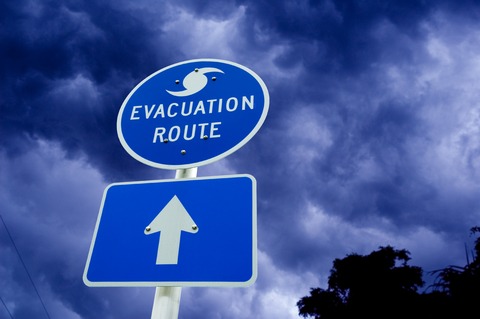
Last month I wrote a post on “Why Climate Change Matters to Healthcare Facility Design.”
Then, while I was away on vacation in Costa Rica and Panama, Hurricanes Harvey and Irma happened — forcing hospitals in Texas, Florida, Georgia, and South Carolina to evacuate and, in many cases, close.
And this week, the terrible news that eight nursing home residents died inside a sweltering nursing home in Hollywood, Fla., in the aftermath of the storm.
Those who are planning and designing healthcare facilities should be concerned. Because experts predict that as global temperatures rise, storms like these will be more frequent and intense.
That’s why it’s more important than ever to design buildings that are resilient — both during and after a storm.
Passive Survivability is One Strategy
Alex Wilson, founder of the Resilient Design Institute, thinks one of the keys to resilience in the face of power outages during and after storms is “passive survivability” — designing buildings with passive measures that allow them to maintain habitable temperatures without power.
Okay, so what’s a passive measure? According to Wilson, the most critical strategy is to create highly insulated building envelopes. His post, “Is There a Silver Lining in the Clouds of Hurrican Irma?” describes this in more detail and optimistically suggests that the most recent storms will be a wake-up call to Washington to take climate change more seriously.
I hope so. But, in the meantime, the healthcare and design industry can continue to support and encourage organizations like the Resilient Design Institute and Health Care Without Harm, which issued this statement after Hurricane Harvey:
“We remain committed to reducing our own contribution to climate change and to working together with our community of health providers to decarbonize the health care sector. The sadness we feel from seeing the suffering caused by Hurricane Harvey only strengthens our resolve to continue our work to build a sustainable and resilient health care system in the United States.” Read the full statement>>
Want More About Resiliency?
“Lessons from Hurricane Harvey.” by Alex Wilson offers five building and design recommendations for cities and buildings that are vulnerable to natural disasters.
“Winds of Change,” article by Katherine Logan in Healthcare Design about natural ventilation.
P.S. Please do me a favor — if you liked this post and like this blog, please share it with others by sending them the link or posting it on your Twitter, LinkedIn, or Facebook. Also, don’t forget to subscribe, so you’ll get emails when new content is posted. Thanks!
If you like this post, please share.

What’s my story? I’m a healthcare and senior living design knowledge expert who writes and speaks frequently about trends and issues affecting these two industries. I’m also a strategic marketing consultant and content creator, working with companies and organizations who want to improve the quality of healthcare and senior living through the design of the physical environment. You can reach me at [email protected].


4 Responses
As much as I enjoy reading your posts, they are difficult to read due to the lack of significant contrast between the background and the content.
You’re the first person to say this, but I value your feedback!
Very important blog. We need to rethink self-sustaining and safe facilities and emergency generators in view of Harvey, Maria, and Jose plus the earthquakes real and anticipated. Hospitals need to be sanctuaries with storage of extra water, food, blankets and emergency supplies for communities. St. Thomas’ hospital out of commission with a destroyed roof was an extra blow to the island, The fires in San Diego demonstrated the need for storing animal crates and places to keep horse trailers and horses, because emergency responders would not come to work without bringing their pets. Who knew? Hospitals need to rethink emergency response from just responding inside the hospital to responding to community needs.
Interesting observation, Jan! Never thought about pets in that situation, but I’d be reluctant to leave mine at home, too, in the face of a fire.